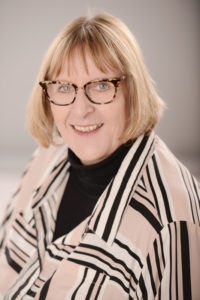 The word Digital invokes a wide spectrum of reactions from arts administrators, from screams of delight to… just screams. Whether capital ‘D’ digital is something that is embedded into your organization’s DNA, or just something that you think the staff millennial does, orchestras are engaging with their audiences on digital platforms in ways that are new, exciting, and scary. In preparation for our National Conference, taking place this June, we sat down (digitally, naturally) with Fiona Morris of The Space to discuss the opportunities and pitfalls of embracing digital technologies in the arts.
The word Digital invokes a wide spectrum of reactions from arts administrators, from screams of delight to… just screams. Whether capital ‘D’ digital is something that is embedded into your organization’s DNA, or just something that you think the staff millennial does, orchestras are engaging with their audiences on digital platforms in ways that are new, exciting, and scary. In preparation for our National Conference, taking place this June, we sat down (digitally, naturally) with Fiona Morris of The Space to discuss the opportunities and pitfalls of embracing digital technologies in the arts.
Fiona is the Chief Executive and Creative Director with The Space, a UK-based commissioning and development organization that works with artists to create new projects in the arts, and supports other arts organizations in their digital strategy work through mentoring, training and consultancy. Along with her colleague John White, Fiona will be running a pre-conference workshop on building a sound digital strategy.
So why Digital and why right now?
 Although conversations about integrating digital technologies into our arts organizations are nothing new, the way we speak about it needs to change. “The term Digital is one of those zeitgeist-y terms,” Fiona says. “It’s a disastrous term that makes people feel inadequate. It’s okay not to know what that word means, because it doesn’t really mean anything.” We tend to use the term as a catch-all for being active online, but don’t always know what this looks like. Orchestras want to be digitally active, but it’s not as simple as just livestreaming everything we do. We need to strategically choose what we present online in order to get the most impact from our limited time and money.
Although conversations about integrating digital technologies into our arts organizations are nothing new, the way we speak about it needs to change. “The term Digital is one of those zeitgeist-y terms,” Fiona says. “It’s a disastrous term that makes people feel inadequate. It’s okay not to know what that word means, because it doesn’t really mean anything.” We tend to use the term as a catch-all for being active online, but don’t always know what this looks like. Orchestras want to be digitally active, but it’s not as simple as just livestreaming everything we do. We need to strategically choose what we present online in order to get the most impact from our limited time and money.
Digital isn’t something that we need to ‘do more of’. Fiona explains this term as “a way of connecting and communicating with audiences that is utterly revolutionary.” The increasing number of digital tools available to arts organizations and their audiences is game-changing, and means that our audiences can be thousands of miles away, or as close as our front door; an exciting and unsettling combination of the hyper-local and the global.
Opportunities and Challenges
As we know here at Orchestras Canada, arts organizations have concerns about how to properly start using digital technologies with limited time and money to put into them (check out the results from this survey we ran last fall on digital strategy at our member orchestras).
This is a great time for cultural organizations. We can engage with our audience in ways we never have before. “For cultural and creative organizations, the opportunity to talk to audiences in detail, and get immediate feedback from them is extraordinary,” Fiona says. Interestingly, it’s a relationship where the audience has all the power. Our audiences consume an overwhelming amount of digital content every day, and they increasingly have the power to decide what they consume and what they ignore. We need to do be purposeful in why we’re asking our audience to engage with us digitally.
Often arts organizations turn to digital platforms (where they have little familiarity) to try and attract younger audiences (with whom they have little experience in communicating). Fiona encourages us to do one or the other of these things well first, before venturing into doubly unfamiliar territory. We need to be very clear and consistent in what our message is to our digital audience, who they are, and why they want to hear it.
Approaching and Integrating Digital
We asked Fiona for some examples of traits that show up in organizations that have successfully transformed their digital work. She mentioned that these organizations all have clarity in their messaging, and gave a series of questions that digitally literate organizations have strong answers to including:
- Who is the audience?
- Where is the audience?
- What conversations are they having?
- Why should they come to us? (i.e. What makes our orchestra’s podcast/livestream any different than anyone else’s?)
Fiona also emphasizes that a digital strategy needs to have roots in every aspect of your organization. “Most arts organizations are very siloed; the Marketing people don’t talk to the Creative people, who don’t talk to the Fundraising people. Digital means that everything is integrated and everything is moving towards one goal.”
Fiona and John from The Space will be leading a pre-conference workshop on how to integrate your strategic and business plans with a digital strategy. Visit the Conference area of our website for more information.
